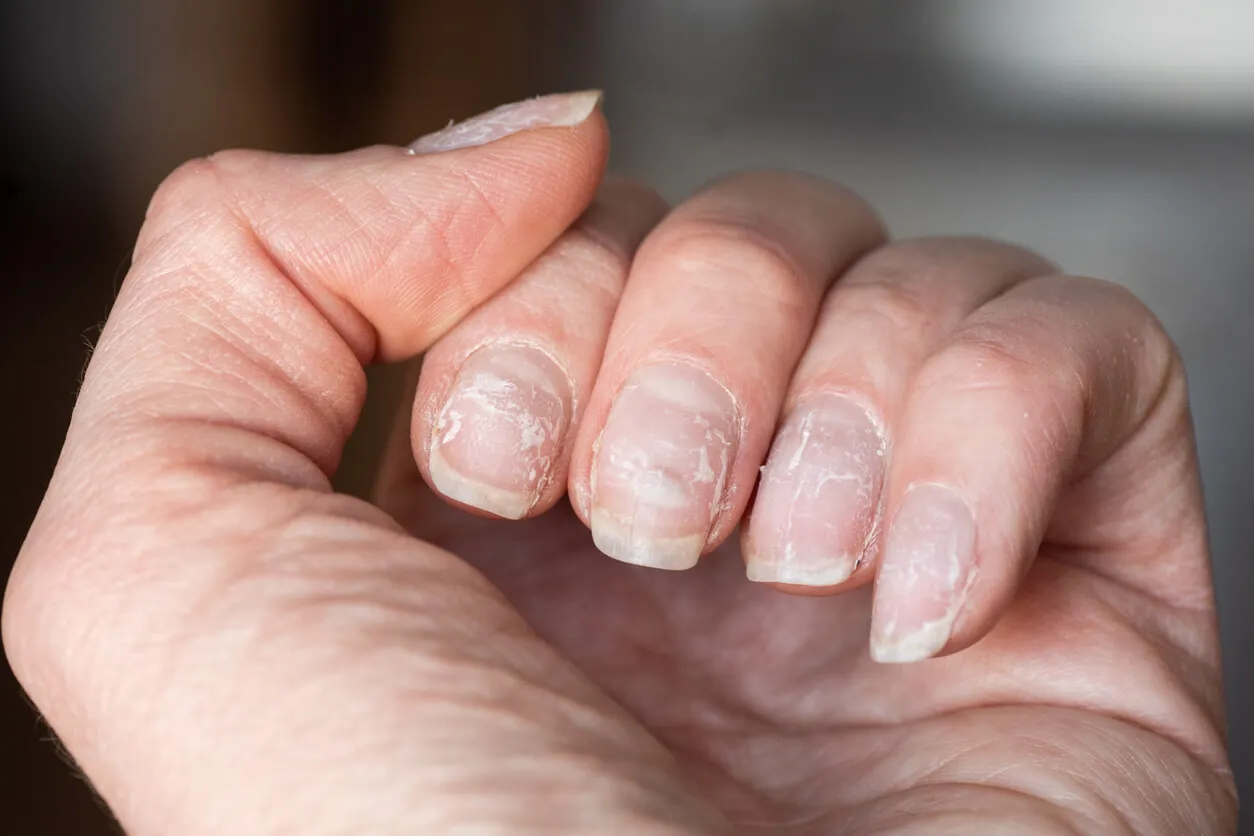How to Recognize Nail Tumors


Reviewed and approved by the nurse Leidy Mora Molina
Many people don’tt know that it’s possible to have nail tumors. Sometimes, they’re confused with certain imperfections and, therefore, can go unnoticed. Hence the importance of learning to recognize them.
Nail tumors are more common than you might think. It’s common that people don’t pay attention to them, however, and this is a mistake, because they can also be malignant.
Many times the anomalies are hidden under nail polish. They may not have such an obvious appearance and may pass for warts, calluses, or unimportant spots.
What does a tumor look like?
A tumor is an abnormal mass due to an inadequate increase in the number of cells. The affected tissue looks swollen or distended.
It forms gradually and is rarely repaired at first. It’s often only noticed when it’s well advanced.
Some nail tumors are benign and therefore only have an aesthetic impact. However, others can be malignant.
In these cases, they have the potential to spread, even to distant parts of the body. In other words, they can metastasize.
One of the main problems with nail tumors is that they’re not easily detected. Almost all of us have 20 nails, and to identify these deformations, we have to check them carefully, one by one. Unfortunately, neither doctors nor patients are in the habit of doing this.
Types of nail tumors
There are several types of nail tumors. Each has its own characteristics. Some require immediate attention, while others don’t have the potential to cause any problems.

Pyogenic granuloma
Pyogenic granuloma is a reddish, smooth-surfaced bump that sometimes looks moist. It’s soft in consistency and may bleed easily. It’s very common that it appears after a blow to the nail and around or under the nail.
If these bumps are small, they usually disappear on their own. If not, they can be treated with surgery, electrocautery, laser treatment, or creams, although the latter is usually not as effective as the other approaches. This belongs to the category of benign nail tumors.
Nail fibroma or Köenen’s tumor
The nail fibroma or Köenen’s tumor develops slowly. It’s firm in consistency, the same color as the skin, and appears around the nail.
When present on several fingers, it’s assumed to be a symptom of a disease called tuberous sclerosis, a rare genetic disorder. This tumor is treated with surgery.
Subungual exostosis
Subungual exostosis is a tumor that, as the name implies, appears under the nail. It arises at the tip of the finger and pushes the nail upwards.
This causes the nail to become detached or deformed. It most commonly occurs on the big toe.
An x-ray is required for diagnosis and it is treated with surgery. It’s a benign tumor.
Glomus tumor
This is another benign nail tumor. The glomus tumor appears under the nail and looks like a bluish-red spot.
It usually causes severe pain that increases in cold weather. Sometimes the pain intensifies with minimal contact. It should also be treated with surgery.
Nail tumors: Onychopapilloma
Onychopapilloma is one of the most common types of nail tumors, but also one of the most easily unnoticed. It looks like a strip that goes from the lunula or cuticle to the free edge of the nail.
It’s whitish, pink, or brown. In the part close to the cuticle, under the nail, a small yellowish-white nodule usually appears. It’s benign.
Onychomatricoma
This is a rare type of tumor. It looks like a yellowish linear band with thickening in that area of the nail that also curves.
It has splinter hemorrhage, which looks like small dark red lines. It’s a benign growth that can be treated with surgery.
We think you may also enjoy reading this article: How to Strengthen Your Fingernails Naturally: 5 Tips
Myxoid cyst
A myxoid cyst is also considered the most common types of nail tumor. It looks like a soft lump that sometimes drains a viscous fluid spontaneously.
Irregular grooves or depressions appear in the nail if the tumor compresses the nail matrix. It’s very often associated with osteoarthritis of the fingers. It’s benign.
Nail tumors: Keratoacanthoma
This is one of the fastest-growing. It lodges under the nail and grows rapidly.
In a matter of weeks or months, it can even damage the bone of the finger, although it’s benign. It’s best treated surgically.
Melanocytic nevus
Melanocytic nevus is a bump that looks like a longitudinal band. It can also appear under the nail and in this case, it looks like a dark spot. Although benign in principle, it’s important to monitor it and take note of any changes.
Melanoma
Melanoma is one of the malignant nail tumors. It looks like a black spot under the nail and then spreads to the surrounding skin.
It gradually thickens and usually doesn’t present any symptoms at first. It’s very aggressive and requires surgery. Sometimes, amputation and chemotherapy are necessary.
Like this article? You may also like to read: How to Paint Your Nails Without Painting Your Fingers
Squamous cell carcinoma in situ
This is also known as Bowen’s disease and is rare. It’s slightly more common in males who are in their third and fourth decade of life.
It looks like a warty lesion under the nail and can sometimes bleed. It’s one of the tu[es pf nail tumors that are malignant.
Nail tumors also occur on the feet. This is an area that’s checked even less than the hands, so it’s important to pay attention to it.
How to check your nails for nail tumors
It’s advisable to check your hands and feet periodically to detect any possible signs of nail tumors. It’s best to pay attention to the following signs:
- Dark streaks. These are usually brown or black. They can appear on any nail but are most common on the thumb and big toe.
- Dark skin near the nail.
- Raised nails. This appears as if the nail begins to separate from the skin and may be a sign of a tumor in the area.
- Fragmented or broken nails. Pay attention to any nails that split in two.
- Lumps or spots under the nails.
- Changes in the nail ridges.
- Deformation of the nail.
- Color changes in the nails.
- Insistent pain under or around the nail.
Any of these signs should be observed carefully. It’s best to discuss them with your doctor, especially if the symptoms seem to evolve over time.
Check without alarm
Most nail tumors are benign. Usually, no treatment even needs to be performed for them, unless they cause discomfort or represent discomfort for the person.
However, bearing in mind that nail tumors can also be malignant, it’s best not to self-diagnose, but to go to a dermatologist. The professional will evaluate the situation and offer a reliable diagnosis.
All cited sources were thoroughly reviewed by our team to ensure their quality, reliability, currency, and validity. The bibliography of this article was considered reliable and of academic or scientific accuracy.
- Castillo Castillo, A., & Doncel Pérez, C. (2013). Granuloma Piógeno. Presentación de un caso. Revista Habanera de Ciencias Médicas, 12(3), 322-328.
- Rodríguez Castaño, M., Rayo Rosado, R., & Reina Bueno, M. (2015). Tumor de Köenen: Etiología, diagnóstico diferencial y tratamiento de elección.
- Martin, B. (2013). Histopatología de la uña. Actas Dermo-Sifiliográficas, 104(7), 564-578.
This text is provided for informational purposes only and does not replace consultation with a professional. If in doubt, consult your specialist.








